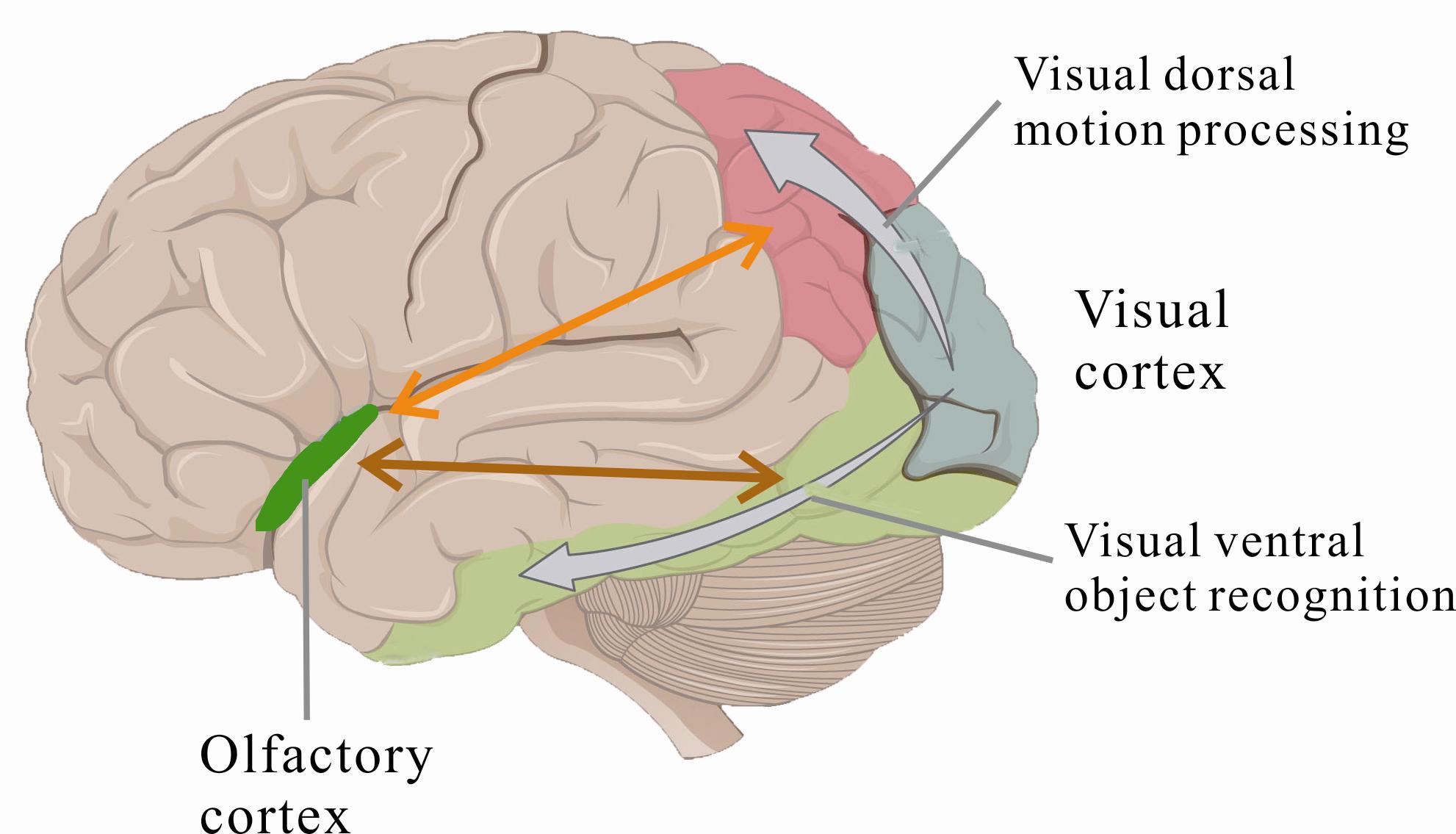In our daily life, we are constantly exposed to multiple sensory inputs that come from different sensory modalities of varying reliability. Yet we could effortless integrate these parallel sensory signals and maintain a unified perception that allows us to interact with the external world. It is well known that dominant senses like vision can modulate perceptions of weak senses such as audition and olfaction. However, surprisingly little is known about whether the reverse modulation can occur. In vision-olfaction interaction, recent studies began to reveal that olfaction can influence visual object perception using the binocular rivalry paradigm (Zhou et. al., 2010). These olfactory modulations on visual object perception suggest a coupling between olfactory system and visual ventral stream for object representations. Yet, it remains to be tested whether visual motion processing, a function that is associated with visual dorsal stream, can be modulated by the olfactory cues (Fig. 1). 
Figure 1: Schematic of visual and olfactory cortices. Visual cortex occupies the vast majority of the cortex and it contains two parallel processing streams: the ventral steam for object recognition and the dorsal stream for spatial and motion analysis. It is known that olfaction modulates visual object perception. However, it is unknown that whether olfaction can modulate vision motion processing. Address this question will provide us some hints on the mutual interactions between the olfactory system and the visual system. To address this question neuroscientists from IPCAS tested whether the perception of ambiguous visual motion direction is influenced by the presence of olfactory cues that are associated with directions by classical conditioning pairing. In each trial, during the pairing phase, participants were exposed a concurrent presentation of smell (either banana or funnel) and unambiguous motion signals (moving either leftward or rightward). During the testing phase they were required to report the perceived direction of ambiguous motion signals, while one of the paired smells was delivered to their nose (Fig. 2). It was shown that olfactory cues significantly biased the perceptions of ambiguous motion signals, with the bias related to the specific pairing associations established prior to the testing phase. Further experiments with randomized pairing scheme or pairing with neutral smells ruled out the possibility that response or decisional biases contributed to the observed effects (Fig. 3). The current finding adds to the sparse evidence for the under-appreciated cross-modal interactions that weak senses such as olfaction are capable of modulating dominant visual perception. Our result of olfaction-visual motion interactions complements recent studies of olfaction-visual object perception interplays. Together these results imply that olfactory and visual processing are closely linked and are likely interacting at multiple visual cortical pathways including the ventral stream of object representation and the dorsal stream of motion representation. 
Figure 2: Experimental procedures. During the pairing phase subjects viewed coherently moving dot patches while sniffing the associated banana-like and fennel-like odorants sequentially. During the testing phase they indicated the perceived direction of an ambiguous moving dot patch after a third sniffing. 
Figure 3: Odorants modulate ambiguous visual motion direction discrimination. When pairing leftward motion with banana-smell and rightward motion with fennel-smell, subjects exhibited more frequent perceptions of rightward motion in fennel-smell trials relative to banana-smell trials. This research was supported by NSFC grants (No. 31070960 and 31271175), Open Research Fund of the State Key Laboratory of Cognitive Neuroscience and Learning (No. CNLZD1305), and the Scientific Foundation of Institute of Psychology, Chinese Academy of Sciences (No. Y3CX112005). Kuang, S. & Zhang, T. Smelling directions: Olfaction modulates ambiguous visual motion perception. Sci. Rep. 4, 5796; DOI:10.1038/srep05796 (2014). |
